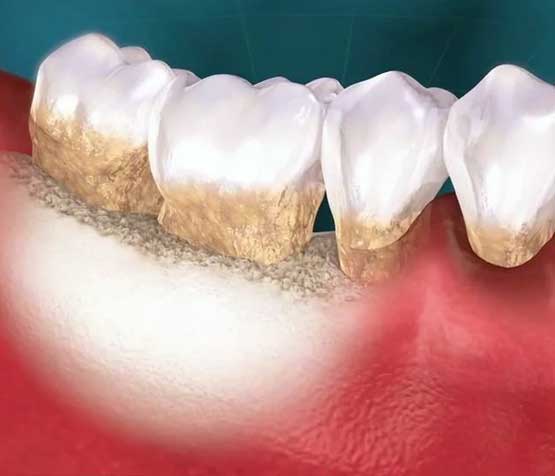Osseous Dental Surgery is also known as ‘pocket depth reduction.’ It is a surgical procedure intended to restore your gums to a healthier, more natural state. The surgery is a procedure done when you have a pocket around a tooth (or teeth) that has not responded to other treatments, such as Scaling and Root Planing and a maintenance program.
Osseous Dental Surgery is used to smooth and reshape the affected bone and create a shallow pocket. Doing this makes it more difficult for the aggressive bacteria to survive.
If you have active periodontal disease, the supporting tissue and bone may be destroyed thus forming a pocket around the affected tooth/teeth. Over time, these pockets become deeper and provide a larger space for bacteria to live in. As bacteria develop around the teeth, they can accumulate and advance under the gum tissue. These deep pockets collect even more bacteria, resulting in further bone and tissue loss. To reduce the need for extractions, Osseous surgery may be recommended.

